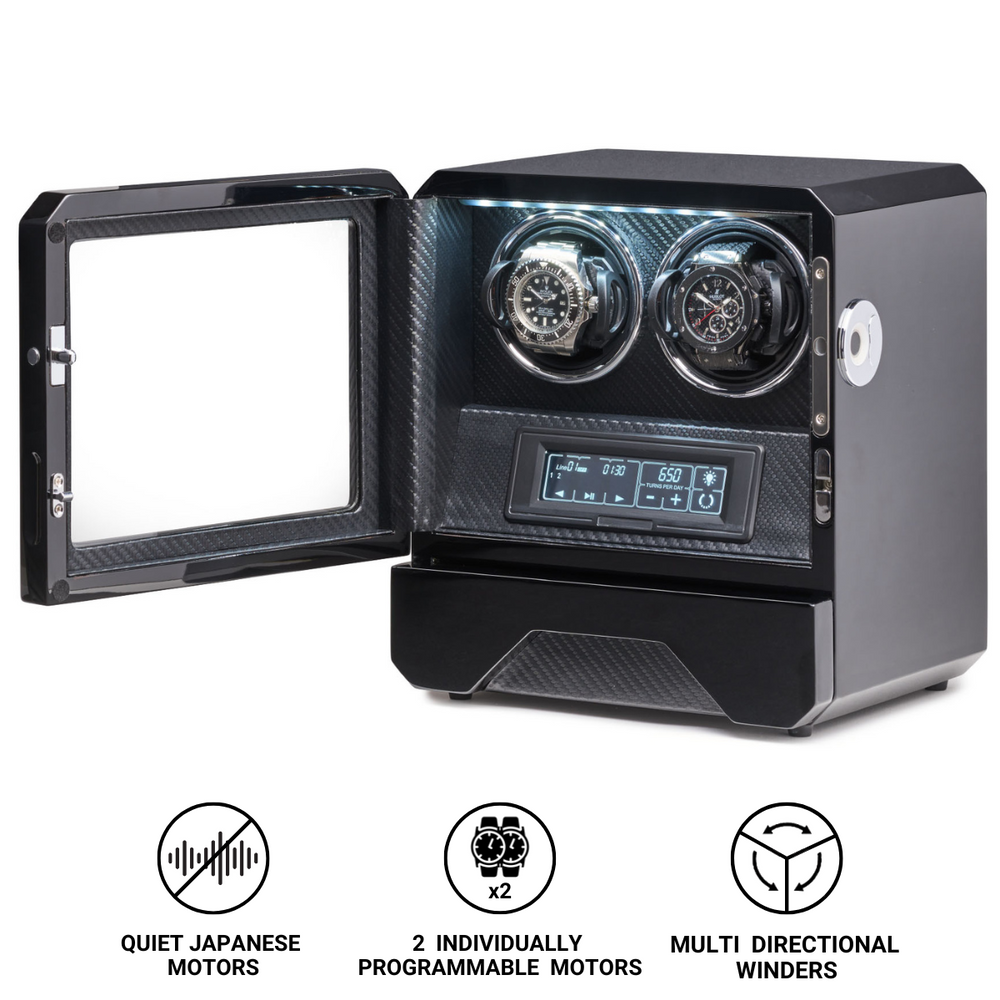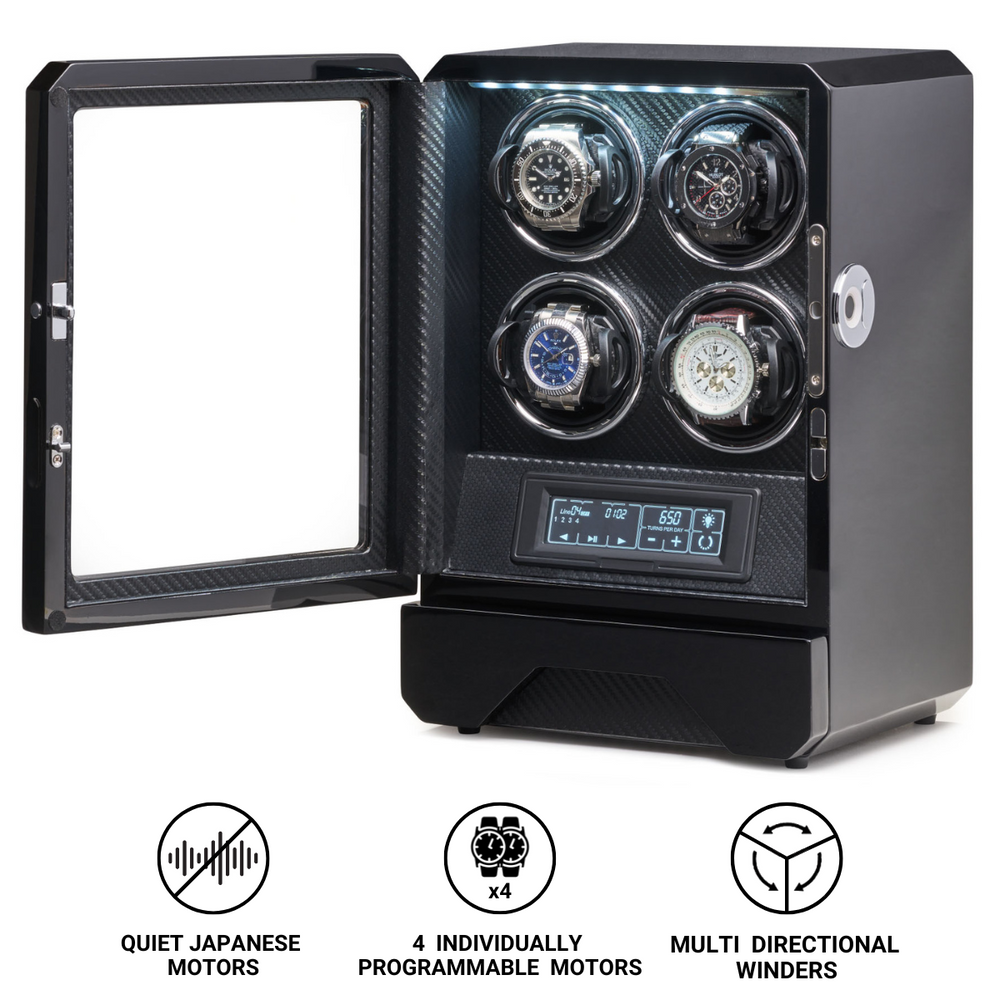What is Domed Crystal?
The domed crystal is one of the most distinctive and admired features in watch design. Characterised by its gently curved or prominently arched profile, it serves as both a functional component and an aesthetic signature. Beyond its purpose as a protective cover for the dial, the domed crystal contributes greatly to the visual identity of a timepiece, influencing how light interacts with its surface and how the dial appears to the viewer.
A domed crystal can evoke the vintage charm of mid-century tool watches or the refined sophistication of high-end dress timepieces. Its curvature creates subtle distortions at certain angles, lending depth and character to the dial beneath. To the trained eye, it signals craftsmanship, nostalgia, and attention to detail.
In the world of horology, where precision and artistry coexist, the domed crystal exemplifies the delicate balance between engineering and design.
The Historical Origins of Domed Crystals
The story of the domed crystal begins with the earliest wristwatches of the 20th century. During the first half of the century, watch crystals were commonly made from acrylic or mineral glass, materials that were relatively easy to shape and polish. The natural curvature of these materials made them ideal for creating domed profiles that not only enhanced durability but also improved visibility.
In the 1930s and 1940s, the domed crystal became a hallmark of military and field watches. The curved shape helped reduce reflections under bright sunlight and added extra strength against impact. By the 1950s and 1960s, with the rise of diving watches and aviation instruments, the domed crystal became a defining aesthetic and practical element of professional tool watches.
Brands such as Omega, Rolex, and Longines incorporated acrylic domes into their iconic models. The Omega Speedmaster, famously worn on the Moon, featured a hesalite (acrylic) domed crystal, chosen for its ability to resist shattering under extreme conditions. Similarly, early Rolex Submariners and GMT-Masters used domed acrylic crystals that enhanced legibility while adding a distinctive vintage charm.
As sapphire became the dominant material in modern watchmaking, manufacturers retained the domed shape not out of necessity but as an homage to the classic designs of the past. Today, the domed crystal remains a cherished detail, connecting contemporary craftsmanship to horological tradition.
The Function and Purpose of a Domed Crystal
While its curvature lends aesthetic appeal, the domed crystal serves several practical functions that improve the performance and durability of a watch.
-
Optical Clarity and Reduced Reflection
The curved surface of a domed crystal can minimise glare and distortions when viewed at an angle. Unlike flat crystals, which can reflect light directly back to the viewer, the curvature of a dome disperses reflections, allowing for clearer visibility in bright environments. -
Enhanced Strength
A domed shape distributes pressure more evenly across the surface, providing greater resistance to impacts and external stress. This principle, similar to that of an arch in architecture, makes domed crystals particularly suitable for diving and sports watches. -
Improved Water Resistance
The shape allows for better sealing against the case and gaskets, enhancing overall water resistance. When combined with a screw-down bezel or case construction, it provides an additional layer of protection against pressure and moisture ingress. -
Visual Depth and Character
The curvature creates a unique optical effect, adding depth and dimensionality to the dial. The way light bends and reflects through the crystal can bring out textures, colours, and finishes on the dial in subtle and captivating ways.
Materials Used in Domed Crystals
Over the years, different materials have been used to produce domed crystals, each with distinct properties in terms of strength, clarity, and cost.
Acrylic (Hesalite or Plexiglass)
Acrylic was the dominant material for domed crystals throughout much of the 20th century. Lightweight, inexpensive, and impact-resistant, it was the material of choice for military and aviation watches. Acrylic’s flexibility allowed for dramatic curvature without cracking, and scratches could be easily polished away using a simple compound.
The major drawback of acrylic is its susceptibility to scratches, which can accumulate quickly with everyday wear. However, many collectors still appreciate its warm, vintage glow and the way it distorts light at the edges, producing a soft, nostalgic appearance that modern materials cannot replicate.
Mineral Glass
Introduced as a more durable alternative to acrylic, mineral glass offered improved scratch resistance while retaining some flexibility for shaping into domes. It became a popular choice for mid-range watches during the 1970s and 1980s.
Mineral glass provides excellent transparency and can be coated for anti-reflective performance. However, it is more prone to shattering than acrylic and cannot be polished to remove scratches.
Sapphire
Synthetic sapphire, created from crystallised aluminium oxide, is the modern standard for high-end watch crystals. It is extremely hard—second only to diamond on the Mohs scale—and offers unmatched scratch resistance.
Producing a domed sapphire crystal is significantly more complex and expensive than shaping flat glass or acrylic. The sapphire must be precisely machined, ground, and polished to achieve the desired curvature without optical distortion. Despite the cost, sapphire domes are now common in luxury watches due to their clarity, resilience, and enduring brilliance.
Many sapphire domed crystals also feature anti-reflective coatings on one or both sides to enhance legibility. These coatings eliminate unwanted glare while preserving the dial’s true colours.
Variations in Dome Profiles
Domed crystals are not all created equal. Their curvature can range from subtle to dramatic, influencing both appearance and functionality.
-
Lightly Domed Crystals
These have a gentle curvature that slightly raises above the bezel. They provide a balanced look suitable for modern watches seeking a vintage-inspired aesthetic without the pronounced distortion of deeper domes. -
High-Domed Crystals
With a more exaggerated curve, high-domed crystals are characteristic of vintage timepieces and reissue models. They create stronger visual distortions and reflections, producing a warm, three-dimensional effect on the dial. -
Box-Domed Crystals
A hybrid design that combines a flat top surface with curved edges, box-domed crystals replicate the look of vintage acrylic glass found on mid-century watches. This design offers both classic style and improved durability, especially when made from sapphire.
The choice between these profiles depends on the intended character of the watch. Dress watches often favour lightly domed crystals for elegance, while tool watches and vintage recreations use high or box domes for authenticity and visual impact.
The Aesthetic Influence of the Domed Crystal
The presence of a domed crystal transforms how a watch is perceived. Its curvature interacts with light and perspective, subtly altering the visual depth of the dial and case. When viewed from different angles, it can create a magnifying or warping effect, giving the dial a sense of movement and life.
For collectors and enthusiasts, this quality is part of the magic of mechanical watches. A domed crystal can make an otherwise simple dial feel dynamic, enhancing contrasts between polished hands, luminous markers, and matte surfaces. In watches with textured or layered dials, the crystal adds dimensional interplay, drawing the viewer’s eye into the watch face.
Moreover, the domed shape contributes to a harmonious overall silhouette. When paired with curved lugs and a tapered case, it softens the profile of the watch, ensuring it sits gracefully on the wrist. It also helps maintain continuity between vintage design language and contemporary refinement, bridging eras of watchmaking heritage.
Challenges in Manufacturing and Maintenance
Producing domed crystals, especially from sapphire, requires precision engineering and advanced manufacturing technology. The curvature must be perfectly symmetrical to prevent optical distortion or uneven refraction. Even a minor imperfection in the curvature can result in blurred or misaligned reflections on the dial.
The cost of machining and polishing a sapphire dome is considerably higher than for a flat crystal. Manufacturers often use computer-controlled milling and laser polishing techniques to achieve flawless curvature and surface finish.
Maintenance of domed crystals varies by material. Acrylic domes can be easily restored by polishing out scratches, while sapphire versions are virtually scratch-proof but can chip if struck with enough force. Anti-reflective coatings, particularly those applied to the outer surface, require care to prevent damage from abrasion or chemicals.
Owners should also be mindful of the domed shape when cleaning or handling their watches, as the curved surface is more exposed and can be susceptible to knocks against hard objects.
The Domed Crystal in Modern Watchmaking
In contemporary horology, the domed crystal has become an essential design feature rather than a necessity. Advances in sealing technology mean that flat sapphire crystals can achieve equal or greater water resistance, yet the domed design continues to be chosen for its aesthetic charm and historical resonance.
Many modern brands use domed crystals to evoke the spirit of vintage models. Watches like the Omega Speedmaster Professional, Longines Legend Diver, and Tudor Black Bay Fifty-Eight employ domed sapphire crystals to recreate the warmth of mid-century acrylic while offering superior durability.
In high horology, brands such as Patek Philippe, A. Lange & Söhne, and Jaeger-LeCoultre use subtly domed sapphire to enhance optical harmony and visual depth in their classic dress watches. The gentle curvature reduces harsh reflections under bright light and adds a touch of sophistication that complements finely finished dials.
Even avant-garde watchmakers have embraced the domed crystal as a design statement. Brands like MB&F and Urwerk use exaggerated domes made from sapphire to create futuristic, sculptural cases that showcase complex mechanisms beneath.
The Emotional and Symbolic Appeal
Beyond functionality and design, the domed crystal carries emotional and symbolic weight. For many enthusiasts, it represents the golden age of mechanical watchmaking, when craftsmanship and ingenuity defined progress. Its smooth, curved surface evokes the tactile pleasure of vintage timepieces, connecting the present to the past.
The distortions and reflections it creates remind the wearer that a watch is more than a tool; it is a living object that interacts with its environment. Each shift in light or angle reveals new facets of the dial, much like time itself revealing different moments and perspectives.
To those who appreciate the subtleties of horological design, the domed crystal is not merely a technical component but a poetic expression of time’s passage and watchmaking artistry.
Conclusion
The domed crystal embodies the perfect fusion of form and function. From its origins in utilitarian tool watches to its place in contemporary luxury design, it remains a defining feature that enhances both performance and aesthetics. Its curvature softens light, strengthens structure, and adds an almost cinematic quality to the viewing experience.
Whether crafted from humble acrylic or flawless sapphire, the domed crystal stands as a tribute to the artistry of watchmaking. It reflects not only the craftsmanship of the maker but also the timeless human fascination with the beauty of curved glass and the play of light over time.
To look through a domed crystal is to glimpse the world of horology at its most refined—a world where engineering meets emotion and every curve tells a story of innovation, heritage, and enduring elegance.









